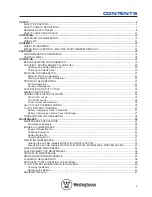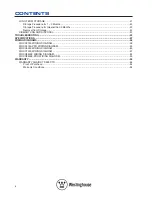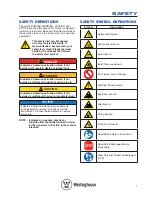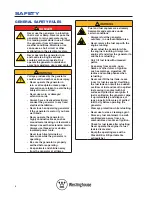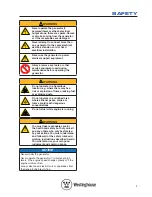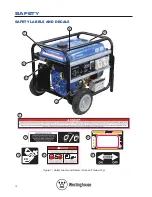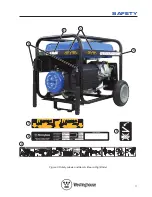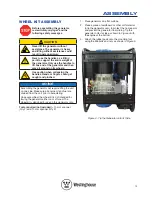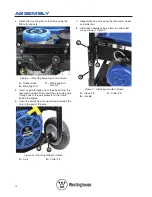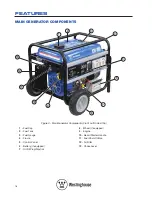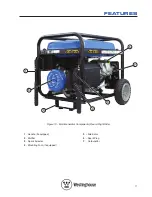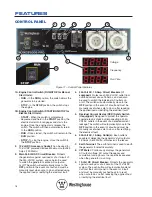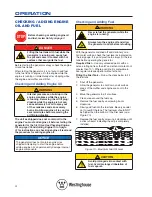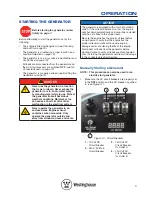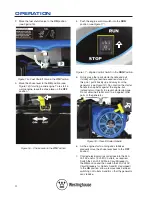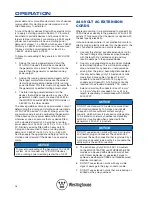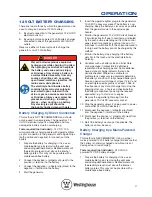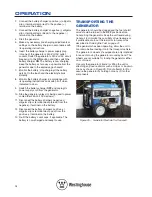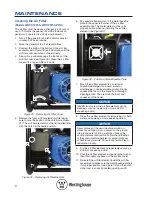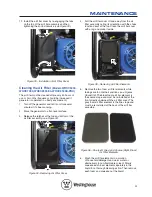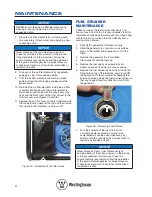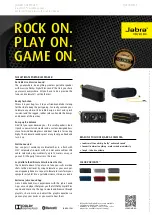
19
OPERATION
BEForE starting tHE
gEnErator
before starting the generator, review
Safety on page 7.
Location Selection – Before starting the generator,
avoid exhaust and location hazards by verifying:
•
You have selected a location to operate the
generator that is outdoors and well ventilated.
•
You have selected a location with a level and solid
surface on which to place the generator.
•
You have selected a location that is at least 1.8 m
away from any building, other equipment or
combustible material.
•
If the generator is located close to a building, it is
not located near any windows, doors
and/or vents.
!
WARNING
Always operate the generator on a
level surface. Placing the generator
on non-level surfaces can cause the
generator to tip over, causing fuel
and oil to spill. Spilled fuel can ignite
if it comes in contact with an ignition
source such as a very hot surface.
NOTICE
Only operate the generator on a solid, level surface.
Operating the generator on a surface with loose
material such as sand or grass clippings can cause
debris to be ingested by the generator that could:
• Block cooling vents
• Block air intake system
Weather – Never operate your generator outdoors
during rain, snow or any combination of weather
conditions that could lead to moisture collecting on, in
or around the generator.
Dry Surface – Always operate the generator on a dry
surface free of any moisture.
No Connected Loads – Make sure the generator
has no connected loads before starting it. To ensure
there are no connected loads, unplug any electrical
cords or devices from the 240-Volt AC and 12-Volt DC
receptacles on the control panel. The main 240-Volt
AC circuit breaker and the individual 240-Volt, 15 Amp
circuit breakers (if equipped) should also be switched
to the OFF position.
NOTICE
Starting the generator with loads already connected
to it could result in damage to any device being
powered by the generator during the brief start-up
period.
Earthing the Generator – When used as an isolated
power supply not connected to a fixed electrical
installation, the generator should be connected to
the general mass of earth by connecting an insulated
copper earthing wire of at least 4 mm
2
size between
the earth terminal on the control panel and an earth
electrode (stake). Vertical-type earth electrodes should
be driven to a minimum depth of 1.2 m in Australia and
comply with all of the other requirements as specified
in the Australian / New Zealand Wiring Rules (AS/
NZS 3000:2007). When used as a power supply to a
fixed electrical installation, the generator should only
be connected and earthed by a licensed electrician in
accordance with the applicable regulations.
Figure 12 – Earth Terminal on the Control Panel
!
WARNING
be sure the generator is properly
earthed before operating to reduce
the possibility of electric shock.
Generators equipped with a RCD
Safety Switch offer much better
protection against electric shock as
mandated by Australian Workplace
Health and Safety Regulations.
Summary of Contents for WHXC3750
Page 4: ...4...
Page 55: ...55 NOTES...

